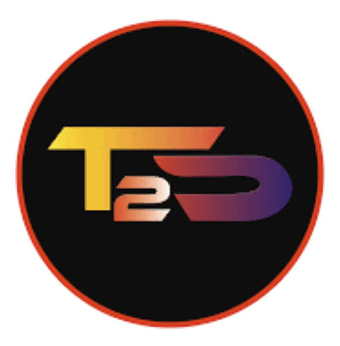Reading Christ in the Book of Exodus!
This is the second in the sermon series “Reading Christ in the Torah.”
Last week, we looked at “Reading Christ in the book of Genesis.”
And we talked about three points:
- Jesus is the Alpha and Omega. He was there at the beginning. He is here and will always be with us.
- Jesus is the sacrificial lamb. He gave up his life so that we can receive eternal life.
- Through Jesus Christ, we have God’s provision.
Today, we will find out where, in the book of Exodus, we can read about Jesus Christ.
Our primary scripture is Exodus 12: 21-28.
But, you cannot truly speak of Exodus without going back to chapter 3. This story is about the narrative of how God called Moses to go and ask Pharaoh to let the people of Israel go free.
In the conversation at the burning bush (Exodus 3), Moses asks God his name. God answers saying that His name is: “I AM Who I AM.” (Exodus 3: 14).
- “I AM” the bread of life. John 6: 35.
- “I AM” the life, the truth and the way. John 14: 6.
- “I AM” the good Shepherd. John 10: 11.
- “I AM” the resurrection and the life. John 11: 25.
- “I AM” the light of the world. John 8: 12.
The scripture, in Exodus 3, is a piece of the story describing the fulfillment of God’s promise to Abraham. God told him that his descendants would become strangers in a foreign land. They would be enslaved and mistreated there for 400 years (Genesis 15: 13).
It was Jacob, Abraham’s grand son, who would move to Egypt upon Joseph’s request. Joseph is one of Jacob’s twelve sons who was sold as a result of jealousy from his brothers. He went from being a slave to becoming the second greatest person in Egypt after Pharaoh.
After Jacob and his entire family had moved to Egypt, their number would go from 70 (Genesis 46:27) to over 600,000 people. On the day they left Egypt, there were 600,000 men on foot, besides women and children (Exodus 12: 37).
But, their liberation happened only after the 10th plague. And, this is what we are looking at today.
Also, we will use as the central element in this book that describes Jesus Christ and what He came to do here on earth for us.
The 10th plague was the toughest and most damaging one. It was about death. God had to come through and if you’re not protected, you could be affected.
So, God gives instructions to the people of Israel on how to protect themselves.
This is the institution of the Passover meal (Pessach). This has become a festival that Israelites, all over the world, celebrate every year.
They had to sacrifice the Passover lamb. Then, they will eat it as a family.
In the case of the Israelites in Egypt, they had to use the blood of the animal and put some on their door posts.
The angel of destruction, when he comes to strike at during the evening following the passover, he will pass over every house that has the sign of the blood of the lamb.
That’s how the Israelites were spared that night. But, all Egyptian families were stricken. They each lost their first born: human and animal.
Eventually, Pharaoh would finally let the people of Israel go free because he also lost his first born son.
How does this have to do with Jesus Christ?
Jesus is the lamb of God
John, the Baptist, said that Jesus is the lamb of God. Here are his words: “Behold, the lamb of God who takes away the sin of the world!” (John 1:29).
Anything that stands against Jesus Christ and the teachings of the Bible, we will overcome because the Lamb has already won our battles.
These will wage war against the Lamb, and the Lamb will overcome them, because He is Lord of lords and King of kinds, and those who are with Him are the called and chosen and faithful.” (Revelation 17: 14)
The Power of His blood
The blood of the passover lamb that the people put on their doorposts is a sign of victory. Jesus, being the lamb of God, shed his blood on the cross. That blood has power.
John talks about overcoming the devil because of the blood of the lamb, Jesus Christ. “And they overcame him (the evil one) because of the blood of the lamb…” (Revelation 12: 11).
How does this apply to us today?
The passover means three things to you and I today.
1. Passing over into a new year
- Jesus, as the lamb of God, came to proclaim the year of the Lord’s favor (Luke 4: 18-19).
- This year of the Lord’s favor is good news for all of us who are poor, thirsty and hungry of God’s righteousness and justice.
- It is the year of liberty and recovery.
2. Family and relationships are restored
- The Passover, with Jesus as the Lamb of God, represents an opportunity for restoration.
- Family together get together for a meal.
- People get together around the table with God at the center.
- The Passover meal centered on Jesus Christ is a ministry of Reconciliation. And you all and I are called to be agents serving through this ministry.
All this is from God, who through Christ reconciled us to himself and gave us the ministry of reconciliation; that is, in Christ God was reconciling the world to himself, not counting their trespasses against them, and entrusting to us the message of reconciliation. Therefore, we are ambassadors for Christ, God making his appeal through us. We implore you on behalf of Christ, be reconciled to God. (2 Corinthians 5:18-20 ESV)
3. Anticipation of what God is about to do
- Faith is a combination of what we believe we have now and what we believe God will do for us.
- “Faith is the reality of what we hope for, the proof of what we don’t see.” (Hebrews 11:1 CEB)
Jesus brings good news that introduces us into a new year. God is moving us out of Egypt through faith in Jesus Christ to a new place in life.
Through faith, we are also reconciled with God so that we can become God’s ambassadors representing His Kingdom here on earth.
So, by faith, step out to love and serve everyone God has brought into your life!
This is a sermon delivered by Pastor Emmanuel at the United Methodist Church in Harris and Lake Park, Iowa.

